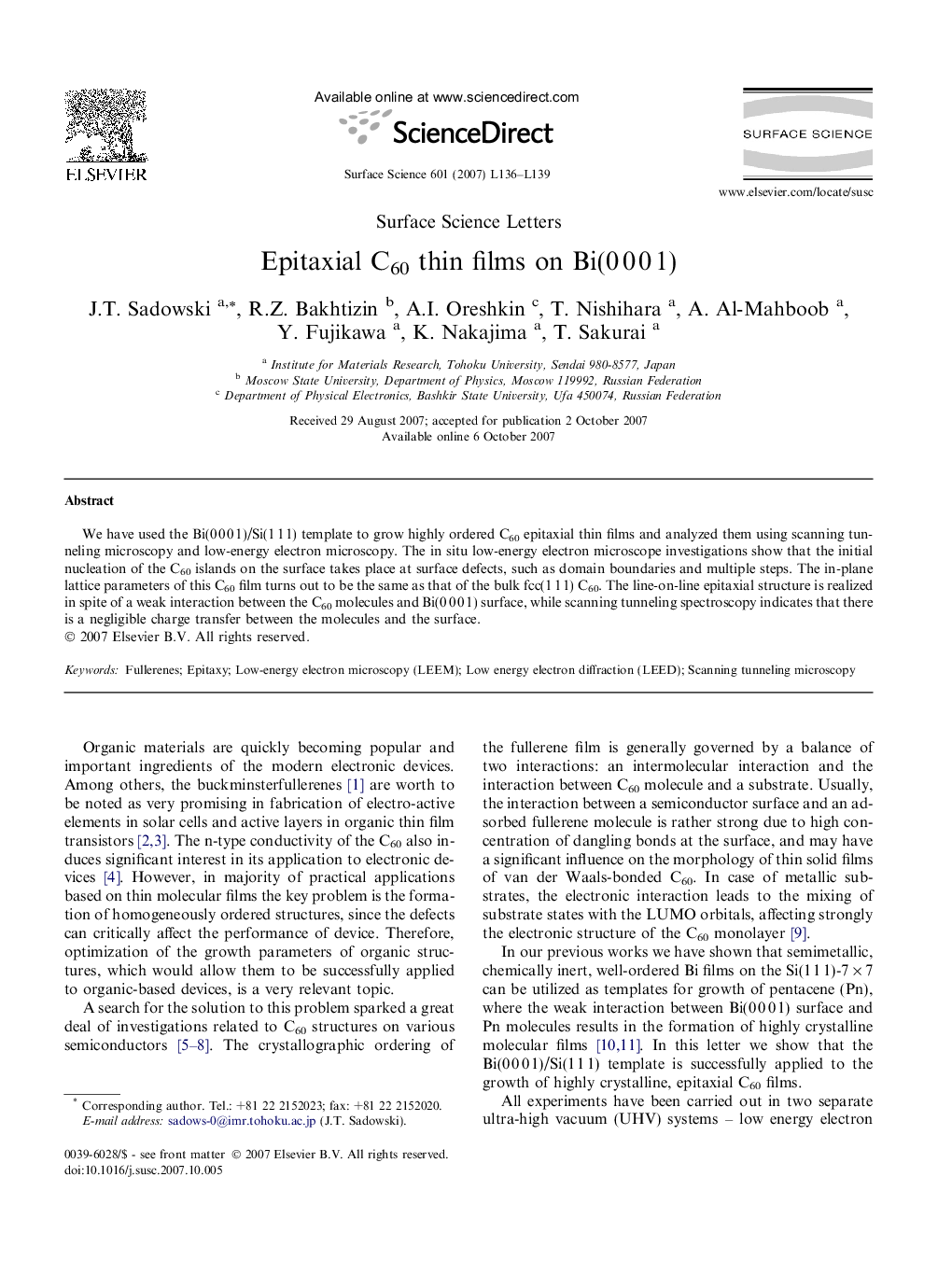| Article ID | Journal | Published Year | Pages | File Type |
|---|---|---|---|---|
| 5426293 | Surface Science | 2007 | 4 Pages |
We have used the Bi(0Â 0Â 0Â 1)/Si(1Â 1Â 1) template to grow highly ordered C60 epitaxial thin films and analyzed them using scanning tunneling microscopy and low-energy electron microscopy. The in situ low-energy electron microscope investigations show that the initial nucleation of the C60 islands on the surface takes place at surface defects, such as domain boundaries and multiple steps. The in-plane lattice parameters of this C60 film turns out to be the same as that of the bulk fcc(1Â 1Â 1) C60. The line-on-line epitaxial structure is realized in spite of a weak interaction between the C60 molecules and Bi(0Â 0Â 0Â 1) surface, while scanning tunneling spectroscopy indicates that there is a negligible charge transfer between the molecules and the surface.
